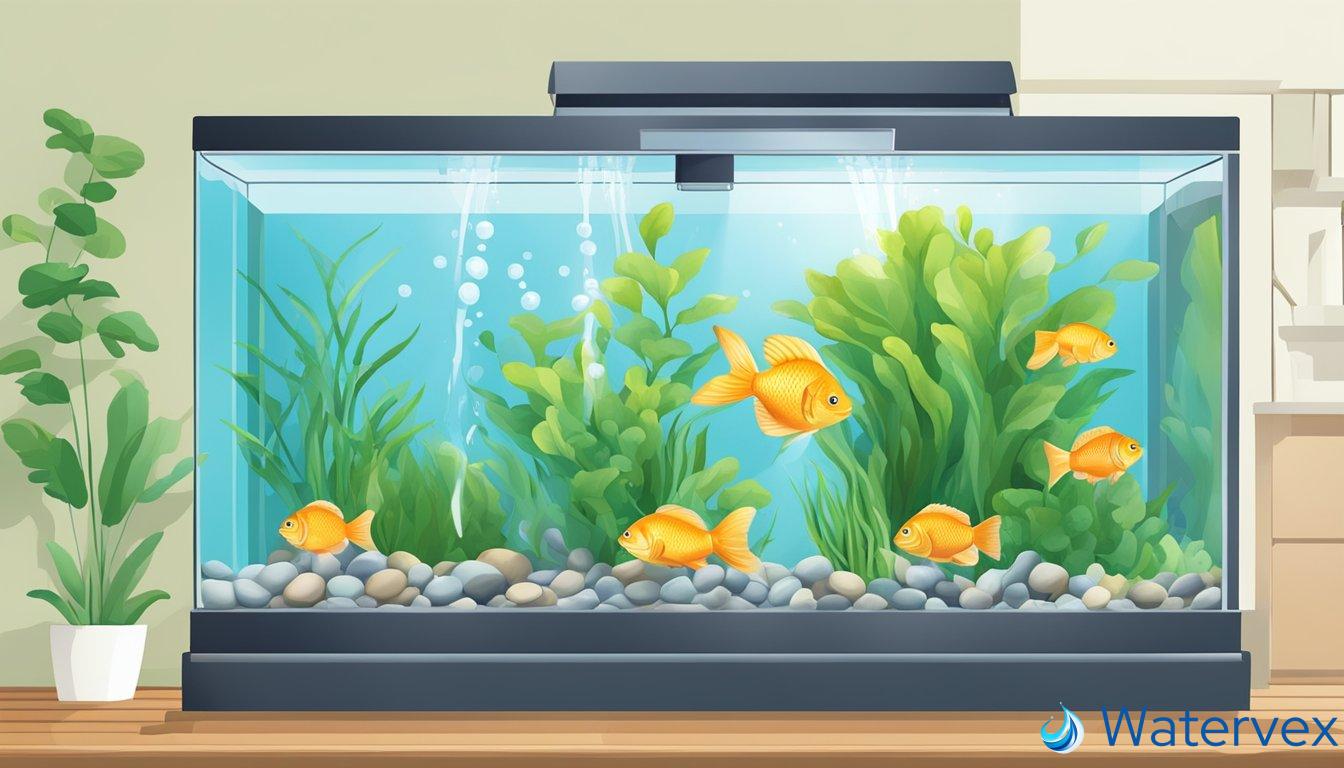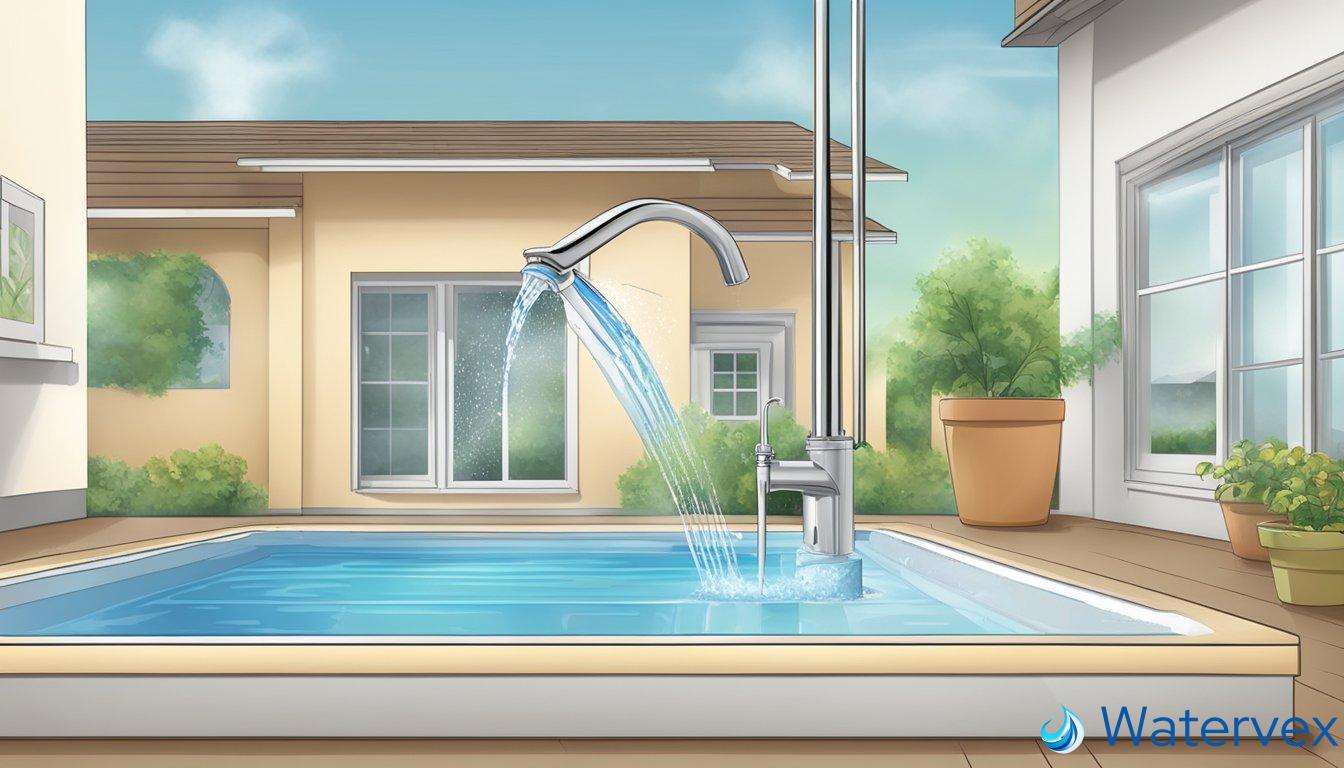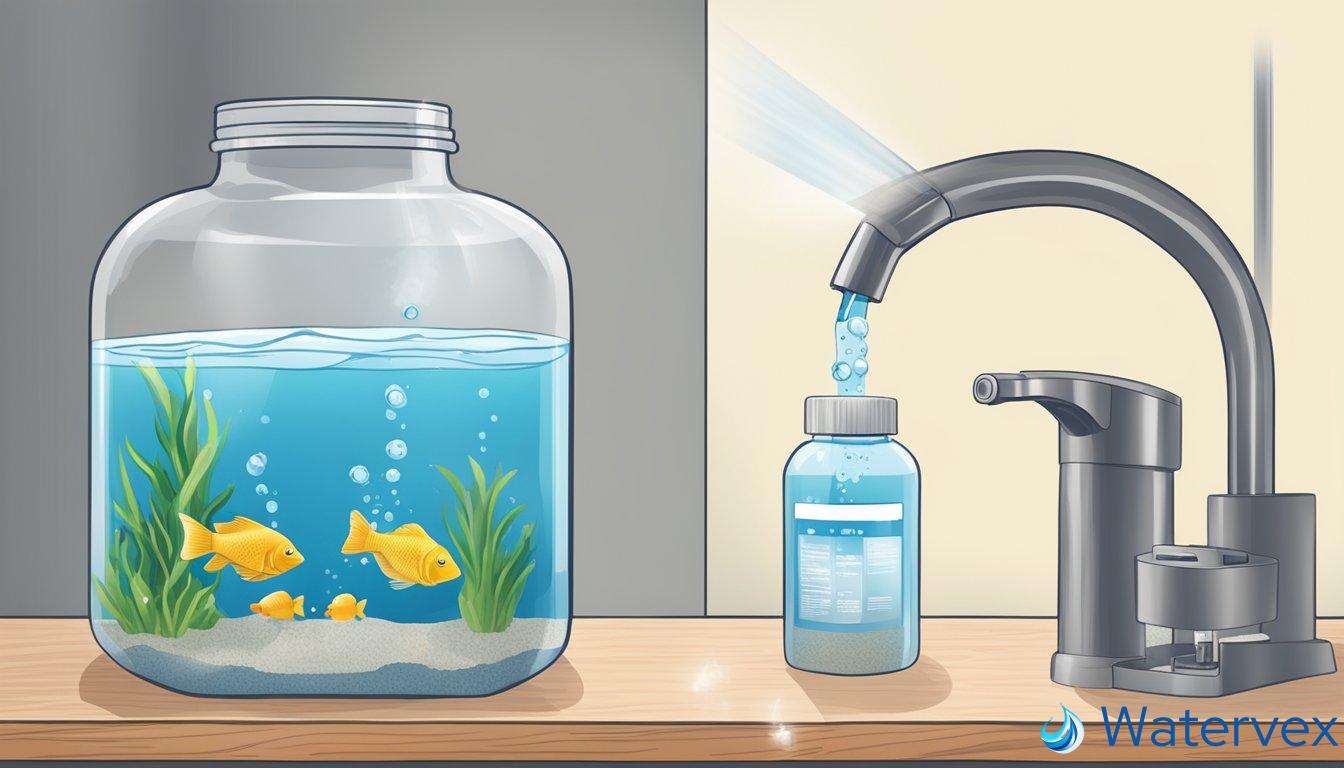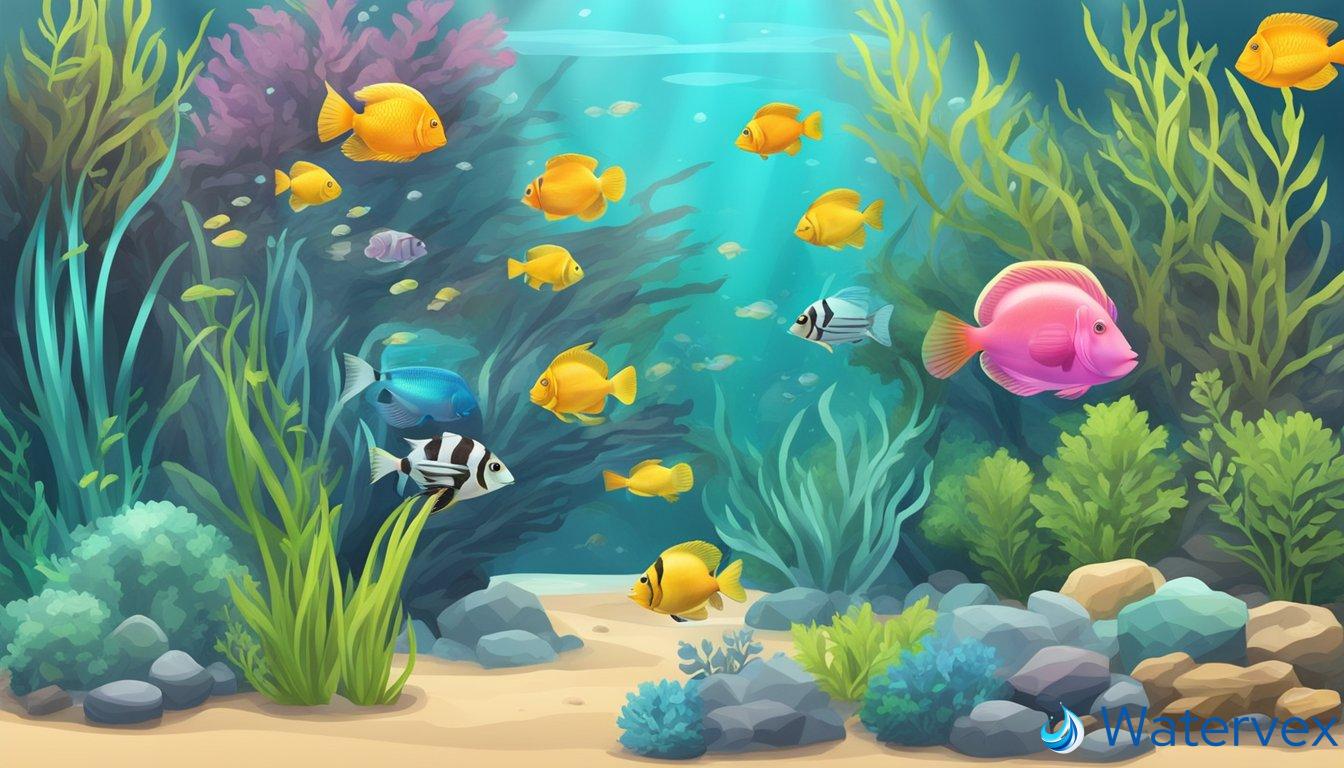When addressing the concerns of high nitrite levels in home aquariums, water conditioners are often mentioned as a solution. Nitrites are toxic byproducts in an aquarium’s nitrogen cycle that can harm fish health. Water conditioners claim to detoxify nitrite, making the water safer for aquatic life. The effectiveness of water conditioners can vary based on the type and brand, but they work primarily by either converting nitrite to a less harmful substance or by binding to the nitrites to neutralize their toxicity.

Water quality is paramount in maintaining a healthy aquarium. Regular water changes are essential, but sometimes, they are not enough to manage the nitrite levels which bacteria convert from ammonia, a waste product from fish. Water conditioners provide a practical solution for aquarists aiming to protect their fish from the adverse effects of nitrite. When used in conjunction with good maintenance practices like controlling food portions and avoiding overstocking, water conditioners can help maintain a balanced environment for your aquarium inhabitants.
Key Takeaways
- Water conditioners vary in effectiveness but generally aim to neutralize or detoxify nitrites.
- Regular maintenance practices are crucial alongside water conditioners to ensure a healthy aquarium environment.
- Combined with beneficial bacteria, water conditioners can help maintain safe nitrite levels.
Understanding Water Chemistry and Nitrite Levels
When monitoring aquarium water chemistry, the focus on nitrite levels is paramount for the health of your aquatic pets. Nitrites (NO2) form part of the nitrogen cycle, a critical biological pathway that processes waste products in the water.
Nitrate and ammonia are part of this cycle as well. Ammonia, excreted by fish or resulting from decaying organic matter, is converted to nitrite by beneficial bacteria. This nitrite is then converted into less harmful nitrate. The ideal scenario is having nitrate levels rise as nitrite levels fall to zero, which reflects a well-functioning nitrogen cycle.
However, when nitrite levels are elevated, it can be harmful to fish, interfering with their oxygen absorption. Testing your tank’s water with a test kit regularly helps in keeping an eye on these levels. pH also plays a role; a stable pH is vital for the beneficial bacteria that maintain the cycle.
Water conditioner is commonly used when adding tap water to an aquarium. While its primary role is to neutralize chlorine and chloramines, some conditioners also claim to detoxify nitrite. They do this by temporarily binding with the nitrite to make it less toxic, providing a window for the biological filter to break down the excess nitrites naturally. It’s a support, but not a substitute for maintaining your tank properly.
To keep conditions optimal for your fish, combine the use of water conditioners with regular maintenance practices:
- Regular partial water changes
- Weekly testing of the water
- Proper feeding routines
Remember, while water conditioners may assist in managing nitrite levels, they’re part of a larger maintenance routine that ensures the overall health of your aquarium.
Managing Nitrites in Home Water Systems

Elevated levels of nitrites in your home water supply can have negative effects on water quality and may lead to nitrite poisoning. Understanding how to control and reduce nitrite levels is essential for ensuring the safety of your household’s water.
The Role of Water Softeners and Conditioners
Water conditioners are often confused with water softeners, but they serve different purposes. Water softeners, through a process called ion exchange, primarily remove minerals like calcium and magnesium, which are responsible for hard water. However, water conditioners, which may include various types of filtration systems, focus on improving overall water quality, which sometimes includes reducing contaminants like nitrites.
Nitrite control in a home water system can sometimes be achieved with specific types of water conditioners. While standard models are not designed for nitrate or nitrite removal, some specialized water conditioning systems are equipped to reduce nitrite levels. It’s worth noting that not all water conditioners have this capability, therefore, it’s important to select one specifically tailored for nitrite reduction.
When considering water conditioners for nitrite control, look for those with reverse osmosis technology or systems that include a specialized anion exchange process. Reverse osmosis systems are highly effective at reducing a wide range of contaminants, including nitrites. They work by forcing water through a semi-permeable membrane, which blocks nitrites and other unwanted substances. Meanwhile, anion exchange systems specifically exchange nitrites in water with a harmless chloride ion, similar to the ion exchange process in water softeners but targeted for different contaminants.
For your family’s health and peace of mind, it’s crucial to ensure safe nitrate levels in your water. If you suspect high nitrite levels, consider having your water tested. Should tests confirm the presence of nitrites, you might decide on installing a water conditioner designed to address this issue. Remember to maintain and replace filters as recommended by the manufacturer to sustain optimal water quality and to consistently protect against nitrite poisoning.
Water quality is a complex subject, but addressing nitrite levels in your home doesn’t have to be. With the right water conditioner in place, you’ll be taking a significant step towards safeguarding your family’s health.
Alternative Methods for Reducing Nitrite Levels

Live plants can be a natural option for managing nitrite levels in your tank. They utilize nitrites as a nutrient, which can help lower their concentration over time. Both freshwater and saltwater aquariums benefit from this strategy. For example, adding anacharis or java fern can increase nitrate removal efficiency.
In addition to plant life, establishing a robust biological filter is key. Beneficial bacteria in these filters convert toxic nitrites into less harmful nitrates. Cultivating these bacteria means providing surfaces for them to grow on, like ceramic rings or sponges.
Regular partial water changes are another practical approach. Replacing 20-30% of the tank’s water on a weekly basis can significantly reduce nitrite levels, disrupting the buildup before it affects aquatic life.
Consider monitoring to lower nitrates, as high nitrate levels often indicate preceding high nitrite conditions. Using products designed to bind or remove nitrites can be a temporary fix, but the focus should be on long-term balance.
| Method | Impact on Nitrites | Impact on Biological Filter | Aquatic Life Benefit |
|---|---|---|---|
| Live Plants | Use nitrites for growth | Minimal impact | Enhanced environment |
| Biological Filter | Converts nitrites to nitrates | Essential for cycling | Safer water condition |
| Partial Water Changes | Dilutes nitrite concentration | Can disrupt if overdone | Immediate relief |
Timing is essential. Nitrite removal should be gradual to avoid shocking your aquatic pets. By following these methods, you can maintain a healthy and balanced environment in your aquarium without solely relying on water conditioners.
Maintaining Healthy Nitrite Levels in Aquariums

When setting up a new tank, it’s crucial to monitor nitrite levels to ensure fish health. Nitrites are toxic to both freshwater fish and saltwater tank inhabitants, often stemming from fish waste and decaying fish food. Here’s how you can manage them:
Partial Water Changes: Regularly change 20-30% of your tank water. This dilutes the concentration of nitrites and reduces stress on your aquatic pets.
Avoid Overfeeding: Overfeeding can lead to excess food decay, which increases nitrite levels. Feed your fish only the amount they can consume in a few minutes.
Observing Fish Food Consumption: Notice if food remains uneaten and adjust portions accordingly. Uneaten food contributes to nitrite spikes.
Beneficial Bacteria: These microscopic allies break down nitrites. In a new tank, cycling it properly to establish a bacterial colony is key. Using products like nitrite-reducing bacteria can aid in this process.
Contrary to some beliefs, water conditioner is a supportive agent that primarily detoxifies nitrites, making water safer in the short term but not directly lowering the levels. So, while not a solution to high nitrites, using a conditioner in conjunction with the above methods is a preventative approach.
Remember, each aquarium is a unique ecosystem. Regular testing keeps you informed, helping you act swiftly if nitrite levels rise, protecting your aquatic family from harm.

